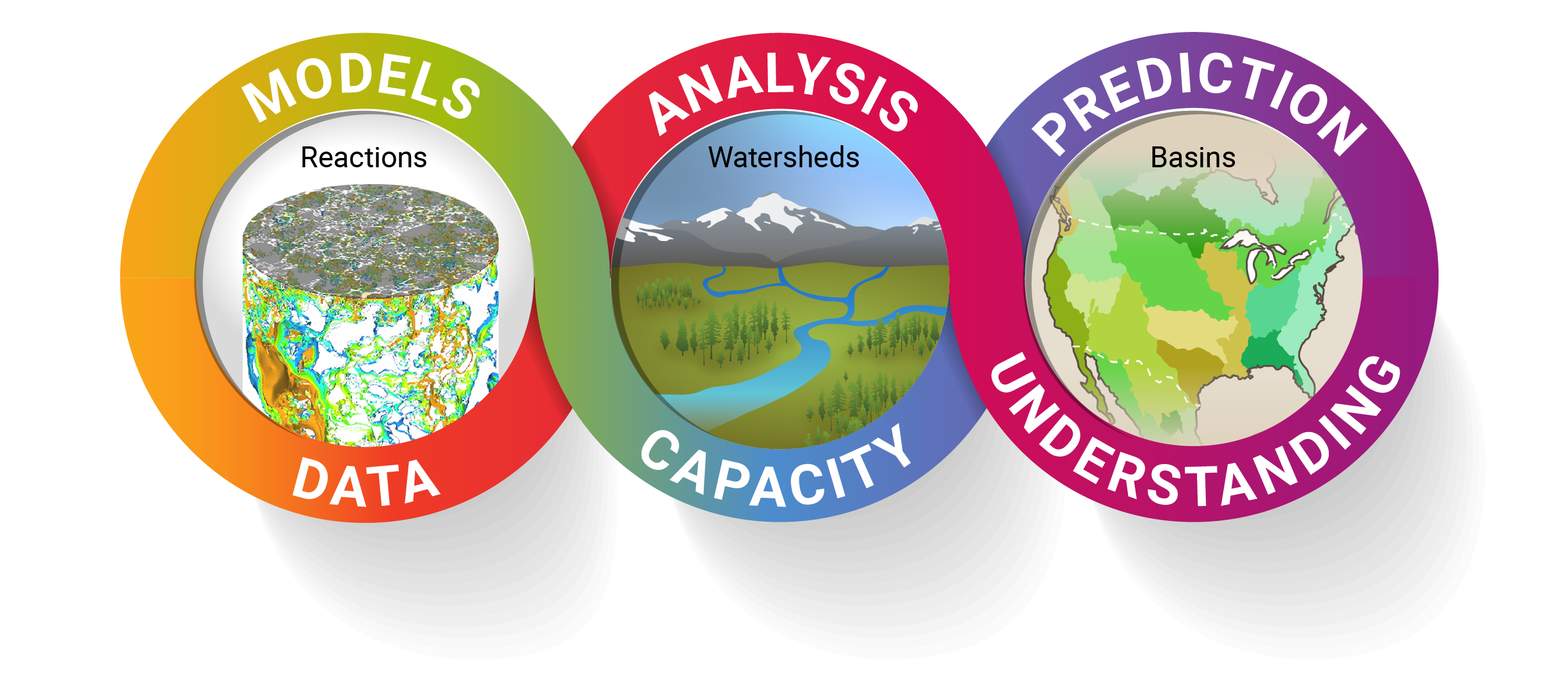Background
The Interoperable Design of Extreme-scale Application Software (IDEAS) project, initiated in 2014, helps ESS and other scientists in the Office of Biological and Environmental Research (BER) increase software development productivity—a key aspect of overall scientific productivity—through a new interdisciplinary and agile approach to creating sustainable, reliable, high-performance scientific software.
For the first four years, IDEAS-Classic made significant progress toward improving scientific productivity in integrated hydrological/biogeochemical systems modeling.
In the next three years, IDEAS-Watersheds will focus on development and demonstration of critical modeling capabilities needed to further advance a process-rich computational capability to support watershed hydrobiogeochemical system science, eventually at river-basin scales – including improved representations of biogeochemical processes and their hydrological controls in the headwaters and stream/river corridors of watersheds.
Addresses Challenges of Computational Watershed Science:
- Represent the effects of fine-scale biogeochemical process understanding at societally relevant scales
- Improve interoperability of existing tools and advance new capabilities to expose untapped synergies across projects.
- Realize potential of HPC resources by improving software design and engineering practices.
- Develop multiscale model-data integration and analysis workflows that leverage rapidly growing and diverse data sources.

The IDEAS project has adopted a more intentional approach to interoperability by advancing formal interfaces to key component capability. The adoption of interoperability as a design philosophy has the potential to significantly reduce duplication of effort and improve scientific productivity for computational environmental scientists.
The IDEAS project supports community collaboration model centered around an “ecosystem” of interoperable components that could be used to build or extend scientific applications. This collaboration model recognizes that existing scientific capabilities currently reside in a small number of existing integrated codes. While each of these integrated or “host” codes has a significant range of capability, none contains the full range of scientific modeling capabilities needed for a comprehensive watershed system perspective. It is thus advantageous to use codes in combination, taking representations of different processes from different codes.
